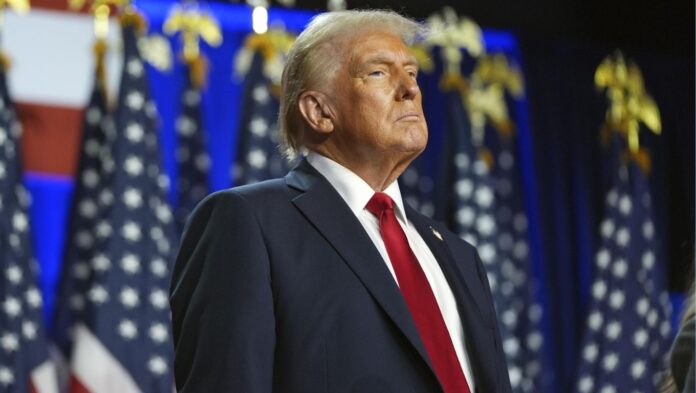When Donald Trump announced his sweeping new trade plan, the market didn’t hesitate to react. Introducing a blanket 10 percent tariff on all imports along with a reciprocal tariff policy, Trump signaled a significant shift in the United States’ global trade stance. Under this new structure, the US will impose tariffs equal to half the rate that any given trade partner imposes on American goods. It’s a bold move aimed at what Trump called restoring fairness and protecting American jobs.
The financial markets felt the tremors almost instantly. Investors scrambled to reassess risk, inflation projections, and earnings outlooks. US stock futures turned red quickly. Both the S&P 500 and the Dow Jones slipped in early trading. The Nasdaq, more dependent on global tech supply chains, saw a steeper drop as traders braced for potential cost increases in key components like semiconductors.
Bitcoin, known for its ability to act as a hedge against traditional market instability, briefly jumped above eighty six thousand dollars before leveling off. Gold prices ticked higher, reflecting a typical investor response to geopolitical and economic uncertainty. At the same time, the US dollar strengthened against many emerging market currencies, driven by renewed expectations of capital flowing back into the American economy.
The new tariff system hits Asia the hardest. Countries like Cambodia, Vietnam, Bangladesh, and China now face import tariffs ranging from thirty four to forty nine percent. These are some of the largest manufacturing centers for US companies in industries like apparel, consumer electronics, and household goods. With production costs rising dramatically, American retailers and manufacturers are expected to pass some of that pressure onto consumers through price hikes.
Tech firms, in particular, are watching with concern. Taiwan’s crucial chip exports now face a thirty two percent tariff. South Korean semiconductors could see import costs rise by twenty five percent. That spells trouble for US companies across the tech spectrum, from smartphone makers to cloud infrastructure providers, all of which rely heavily on foreign chip manufacturing.
The auto sector wasn’t spared either. Japanese car components will be taxed at twenty four percent. Parts from the European Union face a twenty percent duty. For automakers already navigating a tough landscape with electric vehicle transitions, labor cost increases, and global material shortages, this is one more layer of complexity that could eat into margins.
In his speech, Trump focused on a message of economic nationalism. His core argument was that America needs to prioritize its own industries and workers over what he framed as exploitative foreign competitors. He framed the move as part of a larger effort to rebalance trade and encourage companies to bring manufacturing back home.
While supporters praised the plan as a much-needed correction, economists and trade analysts raised red flags. There’s widespread concern that foreign governments could retaliate with their own tariffs, just as they did during Trump’s previous trade battles. In 2018, similar policies sparked a wave of countermeasures from China and Europe that hurt American exporters and complicated global supply chains.
This time, the risks may be even greater. Global production networks are more interconnected than ever. Tariffs imposed on one country often ripple through entire regions, driving up costs, disrupting logistics, and forcing companies to rethink sourcing strategies. Inflation is also a key concern. If companies pass increased costs to consumers, prices could rise across a wide range of goods, further straining American households already dealing with elevated living costs.
Behind the scenes, legal challenges could also be brewing. Trade associations and major corporations may question the legality of such broad actions without congressional approval. Some could argue the policy violates international trade agreements or amounts to an overreach of executive power.
For now, markets are in wait-and-see mode. Traders, policymakers, and business leaders will be looking closely at how global governments respond. Will there be tit-for-tat tariffs? Will US companies accelerate reshoring plans? Or will legal battles slow down implementation?
Trump’s strategy is clear. He wants to reshape how the US engages with the global economy. Whether this new era of trade brings long-term gains or short-term turmoil is something only time and the markets will reveal.
















